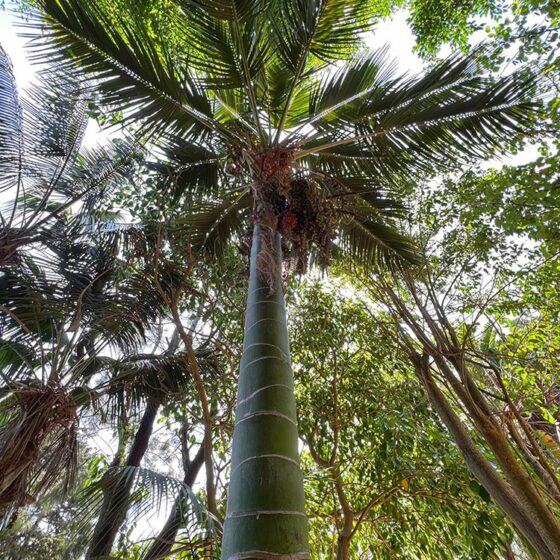Kentia Palm
Howea forsteriana
In 1788 Lieutenant Henry Lidgbird Ball discovered an island located between Sydney and the island of Norfolk which he called Lord Howe in honour of the Minister of the Navy. From 1830 to 1840, the first settlers inhabited it to maintain the whaling ships.
There, they discovered palm trees that did not exist anywhere else in the world.
It was introduced in Europe in 1850 for use as interior decoration. In 1870 the botanist Baron Ferdinand von Mueller put the new species in the genus Kentia, remaining as a common name, after being reclassified in 1877 by Odoardo Beccari in the genus Howea, as endemic to Lord Howe Island. The specific name forsteriana, in honour to William Forster, Australian senator, a key figure in the obtaining of the suffrage of the woman in Australia.
The decline of the whaling industry, in 1880, motivated the trade of the seed as the basis of the economy of the island. With the First World War, the demand fell and due to a shipwreck in 1918, the island was plagued by rats and therefore production decreased. Currently, the export of seeds is a source of income for the island. Its leaves were used to cover the houses.
It is a slow-growing monoecious species, with a green, slender and single trunk. Its diameter ranges from 10 to 15 m in height and 14-15 cm in diameter, with some marks. Pinnate leaves are in a dark green colour, with narrow arched petioles, and horizontal, hanging leaflets. Flowers collate in groups of spikes that hang from the creases of the leaves. Ovoid fruits, in hanging green clusters, turning reddish and brown during ripening.
It adapts to almost all terrains, needs humidity in summer and less in winter, lives outdoors only in mild subtropical climate, and it is very resistant indoors.
In Cadiz, there are examples in Plaza de Mina, Plaza de España, Genovés Park and Parque de los Cinco Continentes.







